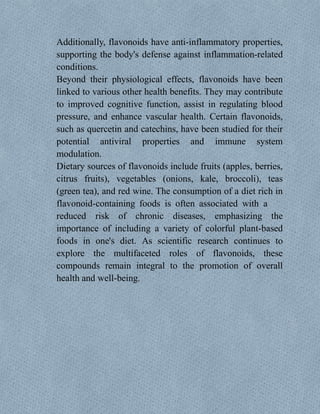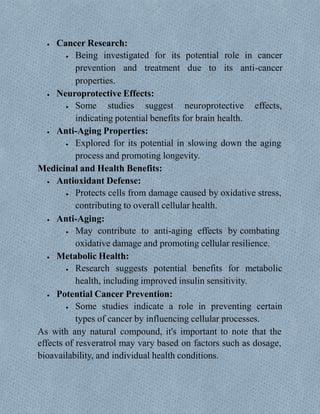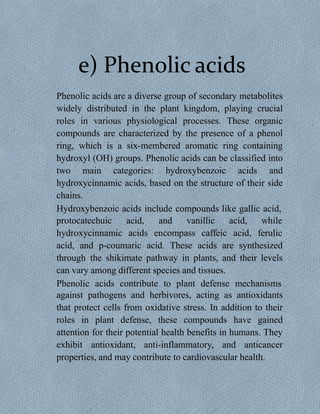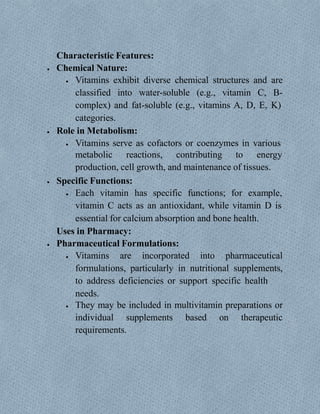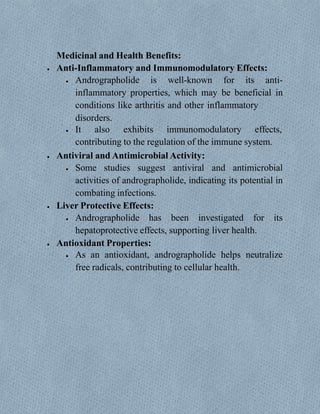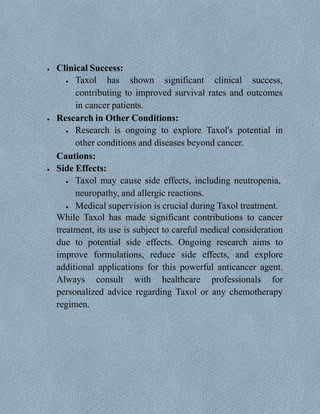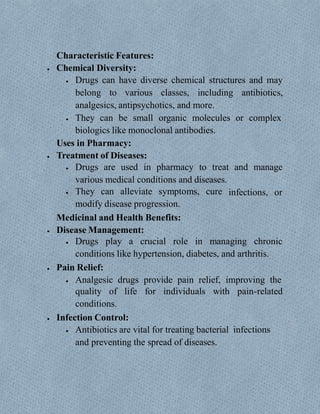The document discusses phytopharmaceuticals, plant-derived medicinal products known for their therapeutic properties, including carotenoids, limonoids, saponins, and flavonoids. It details their occurrence, isolation, and health benefits, such as antioxidant and anti-inflammatory effects, as well as their applications in traditional and modern medicine. Ongoing research aims to standardize their production and enhance understanding of their biological activities for better healthcare outcomes.



























